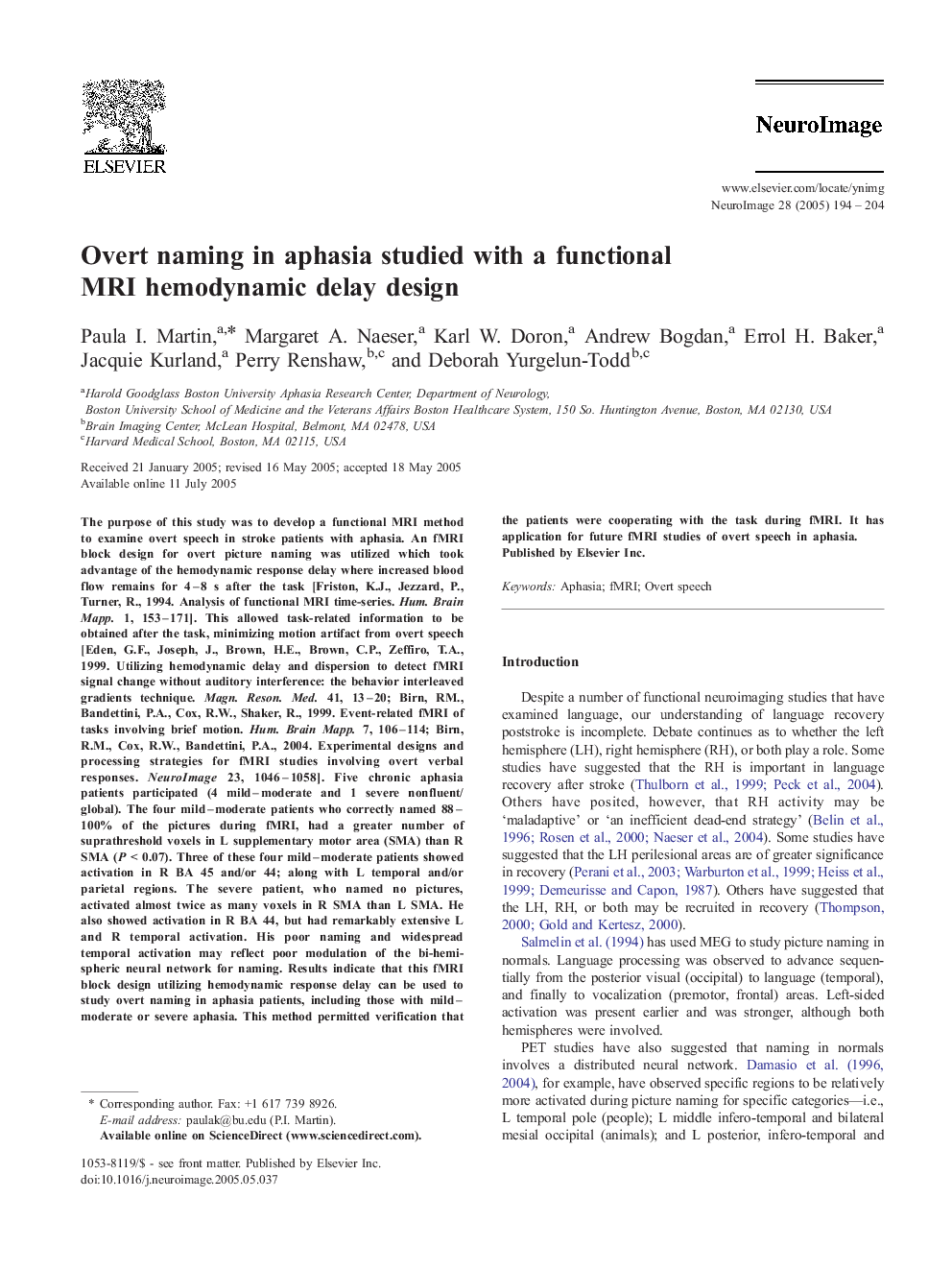| Article ID | Journal | Published Year | Pages | File Type |
|---|---|---|---|---|
| 9197772 | NeuroImage | 2005 | 11 Pages |
Abstract
The purpose of this study was to develop a functional MRI method to examine overt speech in stroke patients with aphasia. An fMRI block design for overt picture naming was utilized which took advantage of the hemodynamic response delay where increased blood flow remains for 4-8 s after the task [(Friston, K.J., Jezzard, P., Turner, R., 1994. Analysis of functional MRI time-series. Hum. Brain Mapp. 1, 153-171)]. This allowed task-related information to be obtained after the task, minimizing motion artifact from overt speech (Eden, G.F., Joseph, J., Brown, H.E., Brown, C.P., Zeffiro, T.A., 1999. Utilizing hemodynamic delay and dispersion to detect fMRI signal change without auditory interference: the behavior interleaved gradients technique. Magn. Reson. Med. 41, 13-20; Birn, RM., Bandettini, P.A., Cox, R.W., Shaker, R., 1999. Event-related fMRI of tasks involving brief motion. Hum. Brain Mapp. 7, 106-114; Birn, R.M., Cox, R.W., Bandettini, P.A., 2004. Experimental designs and processing strategies for fMRI studies involving overt verbal responses. NeuroImage 23, 1046-1058). Five chronic aphasia patients participated (4 mild-moderate and 1 severe nonfluent/global). The four mild-moderate patients who correctly named 88-100% of the pictures during fMRI, had a greater number of suprathreshold voxels in L supplementary motor area (SMA) than R SMA (PÂ <Â 0.07). Three of these four mild-moderate patients showed activation in R BA 45 and/or 44; along with L temporal and/or parietal regions. The severe patient, who named no pictures, activated almost twice as many voxels in R SMA than L SMA. He also showed activation in R BA 44, but had remarkably extensive L and R temporal activation. His poor naming and widespread temporal activation may reflect poor modulation of the bi-hemispheric neural network for naming. Results indicate that this fMRI block design utilizing hemodynamic response delay can be used to study overt naming in aphasia patients, including those with mild-moderate or severe aphasia. This method permitted verification that the patients were cooperating with the task during fMRI. It has application for future fMRI studies of overt speech in aphasia.
Keywords
Related Topics
Life Sciences
Neuroscience
Cognitive Neuroscience
Authors
Paula I. Martin, Margaret A. Naeser, Karl W. Doron, Andrew Bogdan, Errol H. Baker, Jacquie Kurland, Perry Renshaw, Deborah Yurgelun-Todd,
